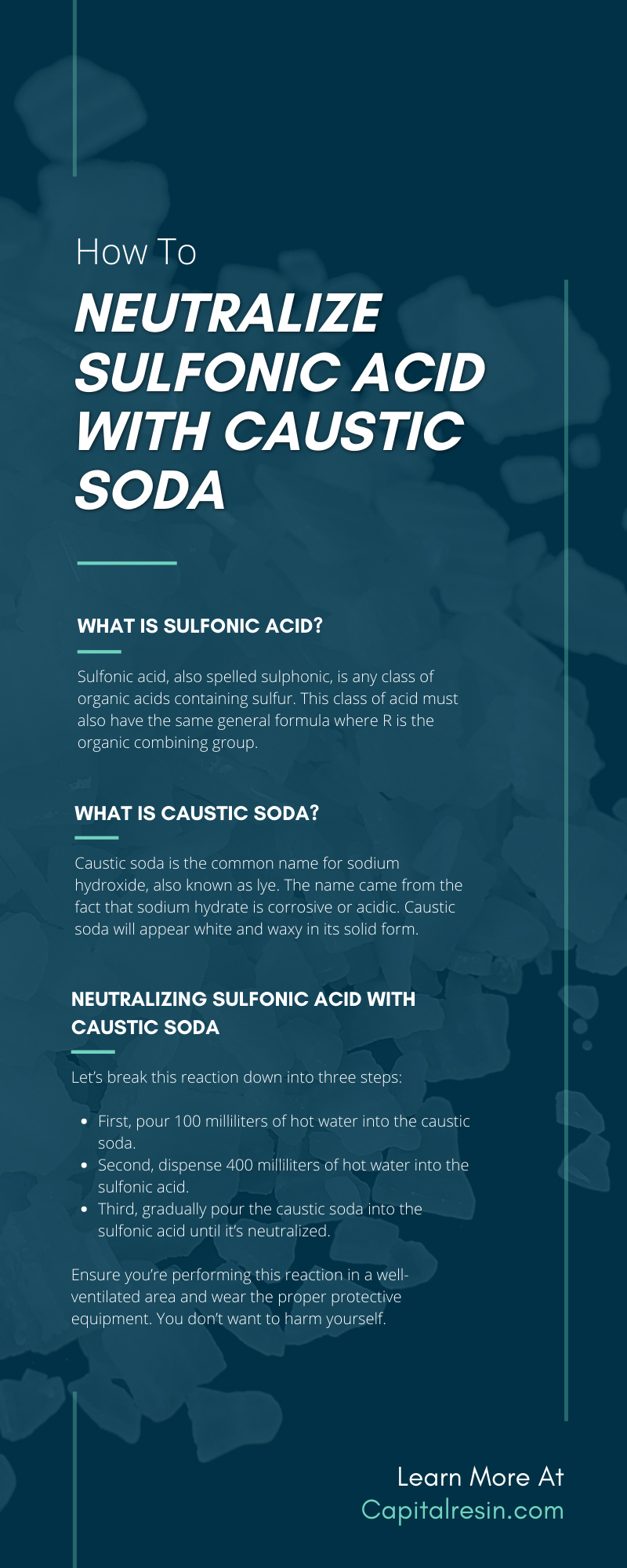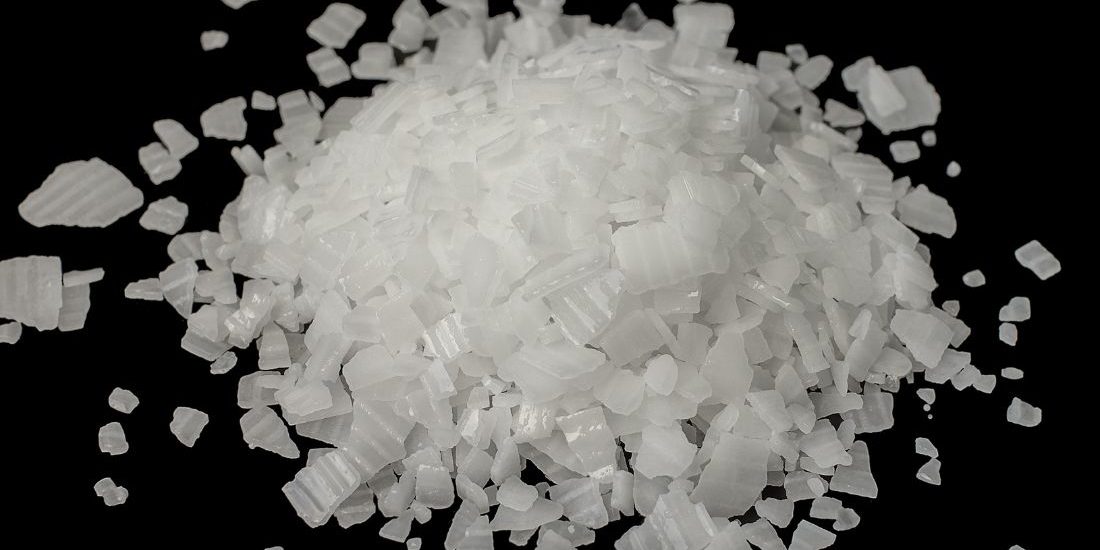Neutralizing sulfonic acid improves the quality of the additive. It is important to understand more about sulfonic acid and the caustic soda you’ll use to balance it. Keep reading to learn more about these two chemicals before learning the process of neutralizing sulfonic acid with caustic soda.
What Is Sulfonic Acid?
Sulfonic acid, also spelled sulphonic, is any class of organic acids containing sulfur. This class of acid must also have the same general formula where R is the organic combining group. You may also hear of it as a sulfo group. In other words:
- Sulfonic acid is sulfuric acid with a single hydroxyl group replaced with an organic substituent.
These acids are strong and play an integral role in creating many everyday items, including laundry detergent and water-soluble dyes. Some scientists claim sulfonic acid is around a million times stronger than carboxylic acid.
Various sulfonic acids, such as taurine, echinosulfonic acid C, and sulfobacins (along with other sulfonolipids), occur naturally.
Sulfonic Acid Uses
People have been using sulfonic acid in place of soap since the 20th century. You’ll often find household cleaning materials, such as washing powder, oil soap, detergent powder, and cleaning powder, contain this acid as a key ingredient.
Sulfonic acids are also an element found in manufactured pharmaceuticals. Sulfa drugs treat ailments such as coughs and common allergies. The sulfa drugs, also called Sulphonamides, are antibacterial drugs made from sulfonic acid. People also use these drugs to treat fungal and malarial diseases.
Most dying agents used today are created through the sulfonation process. Proteins and carbohydrates bond quickly with sulfonic acids. Therefore, many dyed washables contain sulfonic acid or the sulfonyl group.
Sulfonic Acid Safety
It’s important to follow safety protocols when handling sulfonic acid. It can cause severe burns, itching, irritation, rash, and dryness if it comes in contact with your skin.
Wear safety goggles to prevent sulfonic acid from irritating and burning your eyes. Immediately rinse them with water to reduce the damage. Sulfonic acid instantly harms the body once ingested or inhaled, irritating and burning the nose and throat.
Ensure you’re always adhering to OSHA’s guidelines when handling sulfonic acid. Wear the proper safety gear, such as face shields, gloves, and goggles, to protect yourself. Safely handling these chemicals protects you and others around you from harm. It can also protect your facility and ensures the legitimacy of your operations.
What Is Caustic Soda?
Caustic soda is the common name for sodium hydroxide, also known as lye. The name came from the fact that sodium hydrate is corrosive or acidic. Caustic soda will appear white and waxy in its solid form.
People use pure caustic soda to create soap or candles. You can find impure caustic soda in drain cleaner. You’ll only find small quantities of lye available in stores and online due to its use to make illegal drugs.
Caustic Soda Tips
Purchase this chemical in bulk since it’s challenging to get ahold of. If you know of other people who need caustic soda, buy in bulk with them to cut down the cost.
Safety Tips
Always store it in a sealed container away from moisture. It will absorb the water and cause a reaction. Always keep the chemical away from pets and children. They could end up with burns from ingesting or touching the substance. Always use utensils and gloves when handling caustic soda. Never perform reactions in an unventilated room because the reaction causes toxic fumes and heat.
Proper Safety Equipment
Wear a chemical-resistant suit with rubber boots. Ensure the splash goggles fit snuggly on your face to prevent liquid from entering. The goggles should also have adequate ventilation to keep them from fogging up. Wear elbow-length and chemical-resistant gloves to protect your arms and hands. A respirator will limit the amount of exposure you have to the chemical. Wash the personal protective equipment after each use, and make sure you’re also washing your body and clothes to remove any contaminants.
Handling Caustic Soda Spills
If you happen to spill the caustic soda, neutralize the spill with a weak or diluted acid, and then flush the area with water. Immediately notify the proper government authorities if the leak occurred outdoors, as it could harm the environment.
Neutralizing Sulfonic Acid with Caustic Soda
The ratio of acid to soda is one to seven (1:7), meaning for every volume of sulfonic acid, you divide by seven to determine the correct amount of caustic soda needed. For example, if you’re neutralizing one liter of acid, you’ll need 143 grams of caustic soda. You’ll also need 500 milliliters of hot water to help dissolve the sulfonic acid and caustic soda.
Let’s break this reaction down into three steps:
- First, pour 100 milliliters of hot water into the caustic soda.
- Second, dispense 400 milliliters of hot water into the sulfonic acid.
- Third, gradually pour the caustic soda into the sulfonic acid until it’s neutralized.
Ensure you’re performing this reaction in a well-ventilated area and wear the proper protective equipment. You don’t want to harm yourself. If other people are around, ensure they stand back or wear the appropriate protection. And that’s how you neutralize sulfonic acid with caustic soda.
If you’re uncomfortable handling these chemicals yourself, turn to Capital Resin. We provide chemical contract manufacturing for businesses. We create the custom and specialty chemicals your company needs using our expertise and superior equipment, allowing you to focus on other aspects of the business. Contact us today to find out more.








